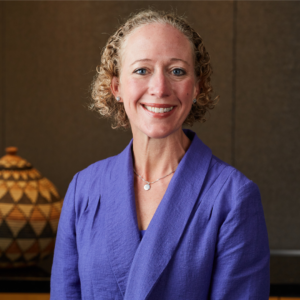Environmental audits
Just as your organization uses operational, compliance, and financial audits to understand how well you are meeting your mission and objectives, an environmental audit can help you create a better residential care environment.
Why conduct an environmental audit?
Environmental audits determine what about the physical environment is performing well or not as expected; and can be used when planning for the future or to provide a neutral, third-party assessment. By gathering and applying lessons learned, successes can be documented, major expenditures can be justified, and future designs can be improved through more informed decision-making and the recognition of opportunities for innovation.
At a glance…
Environmental audits help determine the pluses and minuses in a facility's physical environment. What opportunities for innovation are possible? What features are not performing up to expectations?
Environmental audits can be particularly useful for organizations wishing to embark on small-scale, incremental changes to their physical environment. An environmental audit not only identifies what is or is not working well at a facility, but can be used to prioritize recommendations (e.g., by cost or impact to the organization) to help determine the phasing for future projects. In addition to generating valuable insights that can inform the recommendations for development/renovation, some organizations have used the environmental audit process as an opportunity for building occupants (staff, residents, visitors) to provide feedback and be a part of the group decision-making process-an important part of consensus building and user buy-in.
What's the process?
Environmental audits can be conducted on one or more existing facilities (e.g., during the planning stage to inform the development of future projects or the renovation/redevelopment of an existing site) or on a new facility once it has been built and occupied for at least one year. In conjunction with a physical review of your facility, an environmental audit might also focus on user perceptions and the “person-environment fit” of a place. Understanding the use of space and building occupants' experiences provides a unique perspective on the life of your community, enhancing the assessment of existing physical conditions.
Studies led by the Perkins Eastman Research Collaborative-a group within Perkins Eastman that conducts practice-based research as part of the firm's dedication to advancing best practices in the field of architecture-range from concise environmental audits that gather major lessons learned to more in-depth research studies that evaluate multiple aspects of a facility's operations and maintenance, physical environment, and building occupants' satisfaction and use patterns. The first step in Perkins Eastman's process is to gather information about the organization, facility, and building occupants. Researchers review the organization's mission/philosophy, the design goals that describe how the facility was intended to function, as-built floor and site plans, building occupant demographics and archival data (records of use and behavior, such as utility bills, attendance records, performance reports, medical assessments).
Examples of environmental audits
The following two case studies describe how environmental audits helped the provider organizations make more informed decisions during the process of planning and designing future architectural developments.
MorseLife
The Tradition of the Palm Beaches West Palm Beach, Florida
To inform the expansion of their existing community, MorseLife engaged Perkins Eastman to conduct an environmental audit as part of a master planning process. The study consisted of a one-day site visit, which included a building walk-through and interviews with key administrators and staff. The walk-through assessed the building in terms of how the spaces were being used and the interviews provided anecdotal descriptions of what was (or was not) working. The findings from the study were then shared with the client as well as the architects preparing the master plan to inform the design goals for the expansion of the community.
The Kendal Corporation
Kendal at Granville and Kendal on Hudson Granville, Ohio and Sleepy Hollow, New York
For The Kendal Corporation to make more informed decisions in the future, the organization's “Values and Practices” mission document was translated into design guidelines, based on the findings from environmental audits at two of the provider's newest CCRCs: Kendal at Granville and Kendal on Hudson. The study was conducted over nine months and included building walk-throughs; surveys completed by residents and staff; and interviews with residents, staff, visitors and administrators at the two evaluated communities. The design guidelines generated from the environmental audits focus on the defining characteristics of the physical environment that are specific to a Kendal community. They are adaptable to a broad range of conditions (including diverse sites, contexts, programs, and markets), balance the adherence to principles with the need for adaptability and present ways in which the physical environment cannot only meet people's needs, but also provide opportunities for growth.
The second step is to visit the facility. Depending on the scope of the study and the size of the building, one or more researchers visit the site for one to several days. During the site visit, Perkins Eastman typically conducts a building walk-through to observe, discuss, and document (through notes, annotated plans, and photographs) use/behavior in the spaces and wear/tear of the facility. Talking to the people who use the building every day is also an important step since they are truly the “experts” in how well the physical environment is supporting their needs. Staff, residents, and visitors (e.g., families of residents) are interviewed in order to understand what they like or don't like about the facility and what they wish was different.
Some studies also involve surveying. Surveys provide all building occupants-not just those interviewed by the researchers while on-site-with a chance to provide feedback. Perkins Eastman uses the survey results to confirm and elaborate on, or clarify, the things seen and heard during the visit to the facility and during the interviews. Depending on your needs, researchers can also provide technical assessments, which may include code compliance reviews, M/E/P systems evaluation, environmental sustainability/energy use review and/or program assessment to determine the adequacy of space within the existing building.
If more than one facility is to be evaluated during the study, these tasks will be replicated at each site so the results can be compared. After data collection, researchers analyze the data and create a report that summarizes the results in a way that has real-world application (e.g., the creation of design guidelines or recommendations for facility improvements). For some studies completed by Perkins Eastman, the findings have been presented to boards of directors, residents, and/or architects (those originally involved in the design of the facility or designers engaged for future work).
What would I have to do?
Throughout the course of the study, members of your community will be asked for assistance-from establishing the goals and scope of the study to helping collect data. Client responsibilities vary depending on the scope of the study, but typically include:
Participating in discussions about the key issues being investigated and the status of the study;
Providing background information about the facility(s) being evaluated;
Helping prepare for data collection, including organizing the site visit and reviewing/commenting on survey draft(s), if applicable;
Participating in data collection activities (e.g., touring the building with the researchers during the walk-through or distributing/collecting surveys); and
Helping to organize and participating in the final presentation, if applicable.
How long does the study take?
The answer to this question largely depends on the scope of the study. Variables affecting researchers' time and effort can include the number of buildings/sites involved in the evaluation, the size of the facility(s) being assessed and the range/depth of data collection activities. For instance, a study consisting of just a building walk-through and interviews takes less time than a study that includes surveying. Along these lines, a study that consists of a short survey given to a handful of people would take less time than a longer survey given to more people. D
Emily J. Chmielewski is a research analyst at Perkins Eastman. She can be reached at research@perkinseastman.com or https://www.perkinseastman.com/ResearchCollaborative.
To send your comments to the editor, please e-mail mhrehocik@iadvanceseniorcare.com.
Design Environments for Aging 2010 2010 March;():24-26
Related Articles
Topics: Articles , Regulatory Compliance











